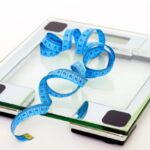Cartography and map reading are essential skills that play a significant role in various fields, including geography, urban planning, navigation, and environmental studies. The ability to interpret and analyze maps accurately is crucial for professionals and students alike. Thus, the question arises: What teaching methods are effective for cartography and map reading?
Understanding the Basics
Before delving into effective teaching methods for cartography and map reading, it is essential to understand the basics of these skills. Cartography is the art and science of mapmaking, encompassing the design, production, and interpretation of maps. Map reading, on the other hand, involves the ability to understand and navigate using maps, recognizing symbols, scales, and legends to gather information about a specific area.
Visual Learning Techniques
Visual learning techniques are highly effective for teaching cartography and map reading. Visual aids such as maps, diagrams, and images help students grasp geographical concepts more easily. By incorporating interactive maps and digital tools, educators can enhance the learning experience and make the subject more engaging. Visualizing geographical data through maps allows students to develop spatial awareness and improve their map-reading skills.
Hands-On Activities
Hands-on activities are another effective teaching method for cartography and map reading. Interactive exercises such as map analysis, map creation, and orienteering activities enable students to apply their knowledge in practical situations. By engaging in hands-on activities, students can develop critical thinking skills, spatial reasoning, and map interpretation abilities. Field trips to geographical locations further enhance the learning experience by allowing students to navigate real-world environments using maps.
Technology Integration
Incorporating technology into cartography and map reading instruction can significantly enhance the learning process. Geographic Information Systems (GIS) software and mapping tools provide students with interactive platforms to explore and analyze spatial data. By utilizing GIS technology, educators can create custom maps, conduct spatial analysis, and engage students in real-world mapping projects. Integrating technology into the curriculum enables students to develop digital literacy skills and prepares them for careers in geospatial sciences.
Multisensory Approaches
Multisensory approaches are effective for teaching cartography and map reading to students with diverse learning styles. By incorporating auditory, visual, and kinesthetic elements into the lesson plans, educators can cater to individual preferences and enhance comprehension. For example, providing audio descriptions of map features, utilizing tactile maps for visually impaired students, or organizing map-related games and activities can make learning more accessible and engaging for all learners.
Collaborative Learning
Collaborative learning strategies promote active engagement and peer-to-peer interaction among students. Group projects, map-making workshops, and collaborative map analysis exercises encourage teamwork and communication skills. By working together to solve map-related challenges, students can share knowledge, exchange ideas, and learn from each other’s perspectives. Collaborative learning fosters a sense of community within the classroom and enhances the overall learning experience.
Real-World Applications
Integrating real-world applications into cartography and map reading instruction is essential for bridging the gap between theory and practice. By incorporating case studies, mapping projects, and practical exercises based on real-world scenarios, educators can demonstrate the relevance and significance of map reading skills in various contexts. Engaging students in hands-on projects that involve mapping local communities, analyzing environmental data, or planning urban developments allows them to apply their knowledge in meaningful ways.
Innovative Assessment Methods
Innovative assessment methods are crucial for evaluating students’ understanding of cartography and map reading. Instead of traditional exams, educators can utilize project-based assessments, map quizzes, and portfolio assignments to gauge students’ map-reading skills and spatial reasoning abilities. By assessing students’ ability to interpret maps, analyze spatial data, and communicate their findings effectively, educators can provide constructive feedback and support individual learning goals.
Empowering Students Through Effective Teaching
In conclusion, effective teaching methods for cartography and map reading encompass a variety of strategies that cater to diverse learning styles and preferences. By incorporating visual learning techniques, hands-on activities, technology integration, multisensory approaches, collaborative learning, real-world applications, and innovative assessment methods, educators can empower students to develop essential map-reading skills and spatial awareness. By fostering a dynamic and engaging learning environment, educators can inspire students to explore the world through the lens of maps and develop a deeper understanding of geographical concepts.





